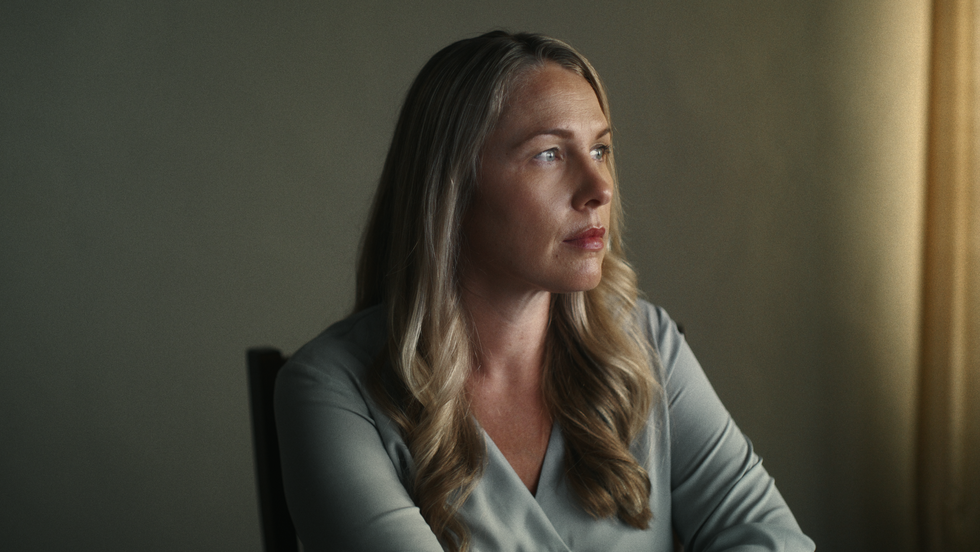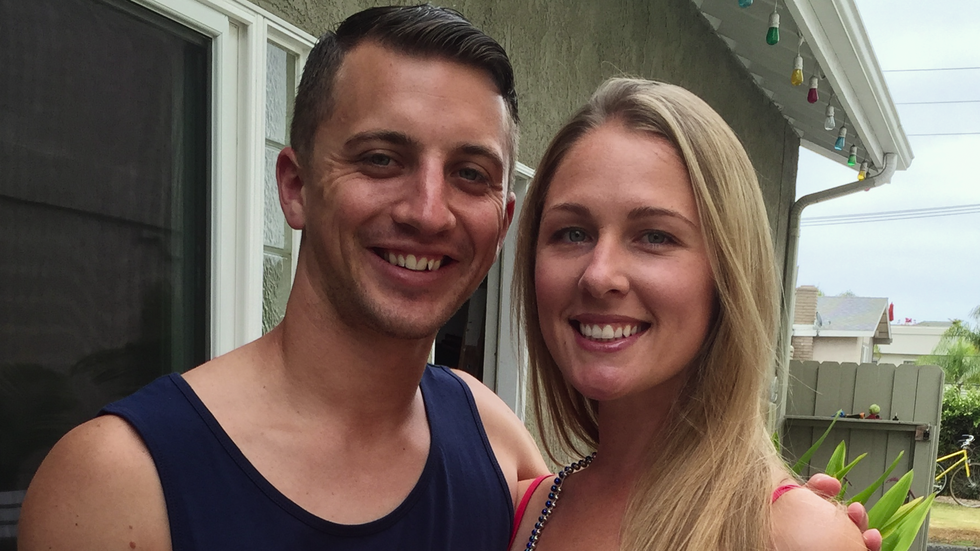In the years following the release of Gillian Flynn’s immensely popular 2012 novel, Gone Girl, and its screen adaptation starring Rosamund Pike and Ben Affleck, an uneasy narrative entered public forums, particularly social media. Was it the case that, like Amy in the story, women regularly faked their own abductions to seek revenge on people who had slighted them in the past?
While it may seem an extreme line of thinking for authorities to follow, this misguided approach had real ramifications – like in the case of Aaron Quinn and Denise Huskins. Back in 2015, the Californian couple found a masked intruder in their home, who tied them up, blackmailed them and kidnapped Huskins. What followed is now the subject of a Netflix documentary, called American Nightmare, directed by The Tinder Swindler’s Felicity Morris and Bernadette Higgins.
So what really happened in the case of Quinn and Huskins? Who was responsible, and where are they now?
The backstory
As per Quinn and Huskins' 2021 interview with ABC7 News, they were both physical therapists living in Vallejo, California in 2014 when they met and began a relationship. Quinn had recently separated from his ex-fiancee, who had allegedly cheated on him. The pair dated for a year.
However, in February 2015, Huskins found messages between Quinn and his ex-fiancee about getting back together. She and Quinn fell out, but began to piece their relationship back together, and on 22 March, met up at Quinn’s house for a make-or-break talk. Huskins stayed the night.
The assault and abduction
The couple were woken at 3am by an intruder wearing a wetsuit. Huskins said: “I remember being asleep and hearing a voice and thinking it was a dream... But the voice kept talking and I just remember my eyes shot open and I could see the walls illuminated with a white light that was flashing and I could see a couple of red laser dots crossing the wall, and I could hear, 'Wake up, this is a robbery. We're not here to hurt you’. And in that moment, I just thought, 'Oh my God. This is not a dream.’”
The couple explained how they were tied up with gaffer tape placed on their eyes. Through headphones, a recorded message told them that they were going to be sedated with drugs.
But midway through the attack, one of the intruders said: “We have a problem,” and asked Quinn: “Do Denise and your ex-fiancée look-alike?”. They did. The couple thought this case of mistaken identity might lead the intruders to leave, but instead they kidnapped Huskins – telling Quinn it would be for 48 hours and that he would need to do some tasks before they would release her – and he was forbidden from contacting the police.
The aftermath
When Quinn eventually came around from the sedatives, Huskins and the intruders were gone. He had texts on his phone demanding two payments of $8,500 for her release. Quinn called his older brother, who was an FBI agent, who advised him to ignore the kidnappers warnings and call the police in.
However, when the police arrived and questioned Quinn, they apparently began to build a case against him. They assumed that he had made up the story to cover up an assault on Huskins. According to Nicole Weisensee Egan, the co-writer of the couple’s later autobiography, Victim F: From Crime Victims to Suspects to Survivors: “They clearly didn't believe him. It is soul-crushing for Aaron because he's out of his mind worried about Denise.”
According to video footage on ABC7 News, the interviewing detective Mathew Mustard could be heard telling Quinn in the interrogation, “the story you're telling here, I ain't buying at all.”
“I'm telling [Mustard] everything because I have nothing to hide," Quinn said. But then the detectives found a spot of blood on his mattress. “I knew there was an old stain on my sheet. I'd washed those sheets multiple times. It's just a small stain that I wasn't able to get out. Little did I know, a quarter-sized bloodstain was going to mean that I was a murderer.”
Two days later, on 25 March, just as her abductors had promised, Huskins was released and dropped off in Huntington Beach, 400 miles away from Vallejo. She eventually gained access to her father’s empty house nearby.
But when the police arrived, they became suspicious. They didn’t know that Huskins had been raped twice by her abductor, and that he had told her that if she revealed this to police, or that anyone involved in the assault was ex-military, he would return to hurt her family.
She told news reporters: “I had no reason to believe, at that time, that they [the police] doubted me. I was just more so afraid... that speaking to them was going to put me or my family in harm.”
According to reports, Vallejo Police then announced that Huskins' abduction appeared to be an “orchestrated event and not a kidnapping”, in the vein of the plot of Gone Girl. The same report states that in a press conference on the day of Huskins’ release, Vallejo police spokesperson Lt. Kenny Park said: “Mr. Quinn and Ms. Huskins have plundered valuable resources away from our community and taken the focus away from the true victims of our community while instilling fear among our community members. So, if anything, it is Mr. Quinn and Ms. Huskins that owe this community an apology.”
The Gone Girl label took its toll on the already shattered Huskins. "You go through something like that, and every moment, every ounce of energy is about 'How do I live to see another second?'," she said of the episode. "That is all you can think about. The last thing that you're thinking about is, 'If I do survive, I need to make sure that I'm believable.'”
How was the culprit uncovered?
Weeks passed and Huskins and Quinn still found themselves held up, wrongly, as the prime suspects in the case. Then three months later, in June 2015, 40 miles away in Alameda County, police were investigating another case involving a masked intruder that had eerie hallmarks of the couple’s own assault.
In this new case, however, the man had tackled the intruder before he could tie up both people, and he escaped – but not before dropping his mobile phone in the house. A quick check with the person in the phone stored as “mom” revealed it to belong to a former Marine and disbarred Harvard-educated immigration attorney named Matthew Muller. Authorities later found a laptop belonging to Quinn in Muller’s possessions, and according to The Guardian: “videos of Muller arranging cameras in a bedroom and then recording himself twice sexually assaulting his blindfolded victim.”
What happened afterwards?
Muller pleaded guilty to federal kidnapping charges and was sentenced in 2017 to 40 years in prison. “What he wasn't charged with were the sexual assaults, the robbery, the burglary against Aaron," Huskins’ lawyer, Doug Rappaport told ABC7 News. “The reason being is that there was no jurisdiction in federal court for those crimes.”
The Vallejo police force later apologised for not believing the couple’s story and accusing them of faking it. In 2018, Huskins and Quinn reached a $2.5m settlement with the city, with no party admitting any wrongdoing.
Huskins and Quinn married in 2018, and wrote a book, Victim F, about their experiences. Speaking with People, Huskins said: “When I was kidnapped, I didn't know if I was going to live to see another day. I just wanted to go back to my life. And then to have people attacking you on social media, the whole Gone Girl label — a whole persona was placed on me that had nothing to do with who I am.” Quinn added: “With PTSD and therapy, it gets easier. But it doesn't ever really get easy.”
American Nightmare is streaming on Netflix now















